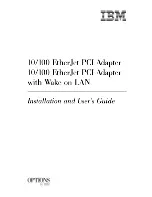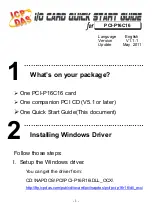
39
Appendix C:
Resolving Interrupt Conflicts
While Plug-and-Play
is often called “Plug-and-Pray,” it actually works
quite well most of the time. We estimate that 95% of Darla24 installations
will go without a hitch
that Plug-and-Play will properly assign resources
to your card without any conflicts. The other 5% of you will likely
experience interrupt problems caused by older, non-Plug-and-Play cards
that are installed in your system. These problems can manifest themselves
by causing your new Darla24 to not function properly; in some instances,
devices will fail that were previously working just fine.
If you are having problems with your computer after installing a new
Darla24 card (or if you are unable to successfully install the card at all),
please read the sections below describing what interrupts are, how they are
assigned, and how to work around interrupt conflicts. Hopefully, we’ll be
able to help you solve your problem without too much trouble.
What is an Interrupt?
A computer has two ways of telling when a device, such as an audio card, is
ready to exchange data with a program. One way is to have the computer
periodically ask or “poll” the device to see if it’s ready to transfer new data.
Since it is important to do the transfer as soon as it is ready, the program
must poll the card quite often, which wastes the computer’s resources.
The other method is to have the card “interrupt” the program when it is
ready to transfer data. It does this by sending a signal over one of the many
interrupt wires connected to the slot into which it is plugged. PC’s have 16
possible interrupts (0 to 15), five of which are reserved by the motherboard
for the keyboard, system timer, etc.
ISA and PCI Interrupts
There are two types of expansion connectors found on today’s computers.
The older style connectors are called ISA (for Industry Standard
Architecture) connectors. ISA connectors have 11 of the 16 PC interrupts












































